|
Progressive Men of
Minnesota
Minneapolis
Journal 1897
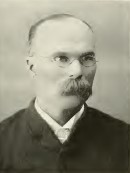 CHRISTIAN J. B. HIRSCH
of New Ulm, Minnesota, is a native of Norway, one of
those who came to America as a young man and cast in his
lot with his adopted country, fighting her battles and
participating in the beneficial results of the war. Dr.
Hirsch was born on August 29, 1842. His father was a
physician in the employ of the government until he was
sixteen years of age he was tutored by a lieutenant of
the army. CHRISTIAN J. B. HIRSCH
of New Ulm, Minnesota, is a native of Norway, one of
those who came to America as a young man and cast in his
lot with his adopted country, fighting her battles and
participating in the beneficial results of the war. Dr.
Hirsch was born on August 29, 1842. His father was a
physician in the employ of the government until he was
sixteen years of age he was tutored by a lieutenant of
the army.
He then
tried the life of a sailor for two years, but gave that
up and returned to Christiania where he attended the
university for three years. In 1863 he left for the
United States in a sailing vessel. He stopped at
Chicago, and during the following year enlisted in
Company D, Eighty-ninth Illinois Volunteer Infantry,
joining his regiment in East Tennessee, where it was
then stationed. His corps started with General Sherman
on the “march to the sea,” but after the battle of
Atlanta was detached to pursue General Hood, who was
threatening Nashville. After the battles of Nashville
and Franklin they followed up the remnants of the
Southern army until they scattered. They next went
to East Tennessee to help in the final operations
against Lee and after the surrender of that famous
fighter the regiment went to Texas, where Dr. Hirsch was
finally mustered out of service in August 1865.
By this
time the young Norwegian had seen enough of war and of
the fighting qualities of the Americans to convince him
of their energetic character. He had also had an
opportunity of seeing a good deal of the country. Upon being
discharged from the service he went back to Chicago and
entered Rush Medical College, from which he graduated
with honor in 1868. A year previous he had been married
to Miss Cammilla M. Thrane, a daughter of Marcus Thrane,
the leader of the Liberal movement in Norway in 1849.
With his young wife Dr. Hirsch settled in Dane County,
Wisconsin, where he practiced medicine for nine years.
He then moved to Baldwin, Wisconsin, where he lived for
one year. He was afterwards in Zumbrota, Minnesota, for
a year; in Lake Mills, Iowa, for two years, and Blue
Earth City, Minnesota, for three years. In the latter
place he was part owner in a drug store and lost all his
books and instruments in a fire which burned the store
and his office. It so happened that his insurance was
small and covered only the drug stock. The next two
years were spent in travel in North Dakota. Dr. Hirsch next settled in Black River Falls,
Wisconsin, where he remained for four years, after which
he moved to New Ulm, in 1890. Since establishing himself
in New Ulm he has built up a large practice. Dr. and
Mrs. Hirsch have had ten children, six girls and four
boys, and have lost one child, a girl. The doctor
belongs to the Brown County Medical Association and the
Mississippi Valley Medical
Association.
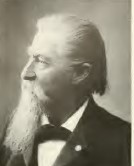 WILLIAM
PFAENDER , The name given is that of one of the founders
of New Ulm. William Pfaender is a native of the city of
Heilbronn, in Germany, where he was born July 6, 1826. WILLIAM
PFAENDER , The name given is that of one of the founders
of New Ulm. William Pfaender is a native of the city of
Heilbronn, in Germany, where he was born July 6, 1826.
His father was Jacob Pfaender, a cooper by trade.
He served in the Light Artillery from 1806 to 1812,
during the Napoleonic wars. William's mother's maiden
name was Johanna Kuentzel. The ancestry of both parents
was German, and the antecedents were plain people of
moderate circumstances. William attended
the common schools of his native town, but the limited
resources of his parents did not permit of his attending
any higher schools or colleges.
He arrived in New York in the spring of 1848,
proceeding from that city to Cincinnati, where in 1855
he became interested in the colonization society and
came to Minnesota in the spring of 1856 as one of the
committee selected to choose a site for the headquarters
of the German Land Association, which consisted mostly
of members of the North American Turnerbund. In September,
1856, New UIm was settled and Mr. Pfaender was made the
manager of the German Land Association, and afterwards
president of the same for several years. But, not to
anticipate too rapidly: After leaving school at the age
of fourteen years. William was apprenticed in a
mercantile house, where he spent four years and served
as a salaried clerk in the city of New Ulm. He left for
America in the spring of 1848 on account of political
trouble, having been suspected of revolutionary
connections. He had earned a moderate salary, but being
conscripted into military service he sacrificed nearly
all of his savings to get release. Ready to do almost
anything he secured employment in the factory of the
Urban Safe Company at Cincinnati, at the rate of $2 a
week and board. Afterwards he served as hotel waiter,
and in 1849 was employed as a bookkeeper in the printing
establishment of the German Republican, a daily and
weekly Whig paper, where he remained, with few
interruptions, until he removed to Minnesota.
At New Ulm he conducted the affairs of the German
Land Association, and, taking charge of the post office,
served as postmaster and as register of deeds until he
enlisted in September, 1861 Mr. Pfaender served in the
Union army for four years. He enlisted as a private in
the First Minnesota Battery, was elected first
lieutenant at the organization of the same, and during
the battle of Shiloh, April 6 and 7, 1862, assumed
command of the battery shortly after the commencement of
the action, the captain having been seriously wounded.
Mr. Pfaender remained in command during the siege and
subsequent occupancy of Corinth, Mississippi, until
August 26, 1862, when, on receiving the news of the
destruction of New Ulm by the Sioux Indians, he was
given an order by General Grant to proceed to St. Paul
on the recruiting service. He was, however, immediately
put on the detached service at St. Peter and Fort
Ridgely, and at the latter post acted as quartermaster
and commissary until the First Regiment Minnesota
Mounted Rangers was organized. Mr. Pfaender was
commissioned as lieutenant colonel of the regiment, and
during the summer of 1863 remained in Command of the
cavalry serving on the frontier. At the expiration of
the term of service of the regiment he went into the
Second Regiment Minnesota Cavalry, with the same rank,
assuming command of the second sub district of
Minnesota, occupying all the frontier posts from
Alexandria to the Iowa state line, with headquarters at
Fort Ridgely, and was mustered out with the regiment on
December 7, 1865.
After returning from service in the army Mr.
Pfaender went back to his farm. In 1870 he established a
lumber yard at New Ulm, and in company with Other
parties built a plaining mill and sash factory. From the time of
the organization of the state Mr. Pfaender had become
interested in politics. His affiliations
were with the Republican party, and he was elected to
the legislature of 1859 and 1860; was then made register
of deeds of Brown county; was one of the first four
presidential electors of Minnesota, in 1860, casting the
vote of the state for Abraham Lincoln. In 1870, 1871 and
1872 he served as a member of the state senate, and in
1875 was elected state treasurer, occupying that
position two terms. On his election as state treasurer
Mr. Pfaender sold out his interest in the lumber
business and removed with his family to St. Paul. He
returned to New Ulm in 1880 and engaged in the real
estate and insurance business, in which he is still
engaged, and at the same time running his farm. He has
always taken an active interest in the organization of
societies for physical and mental development, forming
the North American Turnerbund, of which he is president
for the district of Minnesota. He is a member
of the board of trade and the commercial union of New
Ulm. He was twice mayor of the city and served several
times as member of the city council.
Mr. Pfaender was married at
Cincinnati, December 7, 1851, to Catherine Pfau. They
have had fifteen children, of whom ten are living, viz:
William Pfaender, Jr., who is engaged in business with
his father; Kate (Mrs. Albrecht, Wabasha street St.
Paul); Louise Stamm, wife of Dr. G. Stamm; Josephine
Pfaender, Frederick Pfaender, register of deeds in Brown
county; Amelia, wife of Dr. Fritsche; Emma, wife of
Charles Hauser, of the Hauser Malting Company, St. Paul;
Minnie Pfaender, Herman Pfaender, manager of his
father's farm, and Albert Pfaender, a student at the
state university.
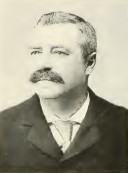 JOHN BAPTIST
SCHMID Mr. Schmid, as his name indicates, is of German
origin on his father’s side, and on his mother’s side of
French extraction. The Schmid family to which the
subject of this sketch belongs emigrated from Hungary to
Germany in the Sixteenth century, where they engaged in
manufacturing glass. On his mother’s side Mr. Schmid is
of Bohemian descent. His father, Clement Schmid, is a
farmer living at Mulligan, Brown County, Minnesota,
having come to this country from Bavaria, Germany, in
1868. His mother’s maiden name was Anna Leibel. JOHN BAPTIST
SCHMID Mr. Schmid, as his name indicates, is of German
origin on his father’s side, and on his mother’s side of
French extraction. The Schmid family to which the
subject of this sketch belongs emigrated from Hungary to
Germany in the Sixteenth century, where they engaged in
manufacturing glass. On his mother’s side Mr. Schmid is
of Bohemian descent. His father, Clement Schmid, is a
farmer living at Mulligan, Brown County, Minnesota,
having come to this country from Bavaria, Germany, in
1868. His mother’s maiden name was Anna Leibel.
John Baptist was born February 27, 1852, in
Stadlern, Upper Palatine, Bavaria, Germany. He received
a common school education. Coming to this country with
his parents in 1868, he settled on a farm in Brown
County, Minnesota, in the town of Siegel. By profession
Mr. Schmid was a musician, and the first dollar he ever
earned was in that vocation. For some years he worked in
the breweries in New Ulm, Minnesota. He then took a
homestead in the town of Mulligan, Brown County, and
proceeded to improve it. In 1878 he engaged in the hotel
business at Sleepy Eye, and in 1882 established a
general merchandise store in the same city, continuing
in the same line of business until January 1, 1885, when
he was nominated by the Democrats and elected sheriff of
Brown County. He served in the office for three terms,
after which, in 1890, he went into partnership with A.
C. Ochs, of New Ulm, purchasing the Springfield roller
mill. In 1893 this partnership was dissolved, the mill
having been sold and Mr. Schmid engaged in the elevator
lousiness and also deals in coal and other articles. To
this business he gives his whole attention. He also owns
and operates three large farms. He was also nominated
for state senator in 1894, but failed of election by a
small majority. He served for five years in the village
council in Springfield, and has been a member of the
school board for the last five years, acting as its
treasurer.
He is a member of several different Masonic
bodies, was a charter member of the Springfield lodge of
Odd Fellows No. 225 serving for two terms as Noble
Grand. In 1895 he was the representative of the 1. O. O.
F. to the grand lodge. He is also a member of O. D. H.
S. and was president of the New Ulm lodge. He is also a
member of the Modern Woodmen of America. Mr. Schmid is
connected with the Catholic church. He was married in New
Ulm in 1872 to Anna Mary Adams, and has ten children
living. His eldest son John R. is at present and has
been for the past three years, assistant cashier of the
State Bank of Springfield. The other living children are
Emma, Louise, Bertha, Edward, Adolph, Victoria,
Benjamin, Constance and Elmer.
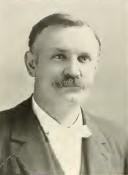 WILLIAM WATKINS SMITH Among the substantial
financial institutions in the southwestern part of the
state is the banking house of Griffith & Smith at
Sleepy Eye. W. W.
Smith, of this firm, is the son of William
A. Smith,
who removed from Goshen, Orange County, New York, to
Oakfield, Fond du Lac County, Wisconsin, in 1846, where
he acquired a large farm, some six hundred acres, and
amassed a handsome fortune as a farmer. Mr. W. A. Smith was active
in promoting the cause of education and provided amply
for his own children in this respect. His wife was Miss
Martha Strong Watkins, a native of Hamptonburgh, New
York, a lady of superior culture and many Christian
graces. They were married in 1846, and reared a family
of five children, of whom William was the youngest. Mrs.
Smith’s ancestors were of English and Scotch descent and
came to this country during the Colonial days. Mr.
Smith’s ancestors were Colonial settlers, and his father
won distinction in the War of 1812. WILLIAM WATKINS SMITH Among the substantial
financial institutions in the southwestern part of the
state is the banking house of Griffith & Smith at
Sleepy Eye. W. W.
Smith, of this firm, is the son of William
A. Smith,
who removed from Goshen, Orange County, New York, to
Oakfield, Fond du Lac County, Wisconsin, in 1846, where
he acquired a large farm, some six hundred acres, and
amassed a handsome fortune as a farmer. Mr. W. A. Smith was active
in promoting the cause of education and provided amply
for his own children in this respect. His wife was Miss
Martha Strong Watkins, a native of Hamptonburgh, New
York, a lady of superior culture and many Christian
graces. They were married in 1846, and reared a family
of five children, of whom William was the youngest. Mrs.
Smith’s ancestors were of English and Scotch descent and
came to this country during the Colonial days. Mr.
Smith’s ancestors were Colonial settlers, and his father
won distinction in the War of 1812.
The subject of this sketch was born February 24.
1857 at Oakfield, Wisconsin. He remained on the farm,
attending the country school in winter, until the fall
of 1876 when he entered Lawrence University at Appleton.
Wisconsin. He graduated there in June, 1881, in the
Latin Scientific course, with the degree of B. S. On the
fifth of the following July he set out for Canton, South
Dakota, where he had secured a position in what is now
the First National Bank of that city. He remained there
one year, when he became persuaded that a similarly
conducted institution un his own account would be more
to his advantage, and he formed a partnership with
Clarence D. Griffith, of Appleton, Wisconsin, with whom
he proceeded to Sleepy Eye. where they established a
banking business under the name of the Merchants
Bank. This
enterprise was inaugurated August 1, 1882 and has been
in operation without change of partnership ever since. Mr. Smith
has had quite a successful business career, but has not
forgotten that the first dollar he ever earned was
received for hoeing corn while a boy for a neighbor.
He is a Republican in politics. though he never
has taken a very active part in party affairs. He has
been a member of the local school board for twelve
years, and treasurer of that body for six years. He was
also complimented by Governor Nelson with an appointment
on his staff with the title of major. He is a member of
the I.O.O. F.
and the Knights of Pythias. He is not a member of
any church, but is an attendant and supporter of the
Congregational church, of Sleepy Eye. He was married
September 2g, 1885 at Kasson, Minnesota, to Miss Ada
Cogswell Bunker, youngest daughter of John E. Bunker.
They have two children, Arthur Bunker and William
Watkins, Jr. Mr. Smith’s business interests are not
confined to Sleepy Eye, but he is interested in banking
institutions at Echo and
Montevideo.
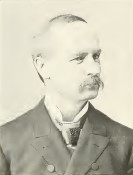 GEORGE WASHINGTON SOMERVILLE One of the most
prominent members of the legal profession in Southern
Minnesota is George Washington Somerville, of Sleepy
Eye, Brown County, Minnesota. Mr. Somerville was born in
Ripley County. Indiana, June 3, 1855; son of William and
Rachel (Cunningham) Somerville. On his father’s
side he is of Irish descent, his grandfather having been
born in the north of Ireland, emigrating to this country
when but nineteen years of age. William Somerville was
born in Pennsylvania, but lived in Indiana from boyhood
until his removal to this state in 1860 when George W.
was but five years of age. He settled on a farm in Mola
township, Olmsted County, where he still resides, and is
one of the most prosperous agriculturists in that
fertile section of the North Star state. He is also
prominent as a horticulturist, having early begun to
ornament his farm with evergreens, to which he added the
useful fruit varieties. He now has one of the best
orchards in the state of Minnesota. He has been a prominent member of horticultural
societies, and was for several years a lecturer on
horticulture with the State Farmers’ Institute, being
recognized as one of the most competent authorities on
the subject in this state. He was also honored by the
people of his neighborhood by being elected to the lower
house of the legislature in 1872; he has also held
several town offices. GEORGE WASHINGTON SOMERVILLE One of the most
prominent members of the legal profession in Southern
Minnesota is George Washington Somerville, of Sleepy
Eye, Brown County, Minnesota. Mr. Somerville was born in
Ripley County. Indiana, June 3, 1855; son of William and
Rachel (Cunningham) Somerville. On his father’s
side he is of Irish descent, his grandfather having been
born in the north of Ireland, emigrating to this country
when but nineteen years of age. William Somerville was
born in Pennsylvania, but lived in Indiana from boyhood
until his removal to this state in 1860 when George W.
was but five years of age. He settled on a farm in Mola
township, Olmsted County, where he still resides, and is
one of the most prosperous agriculturists in that
fertile section of the North Star state. He is also
prominent as a horticulturist, having early begun to
ornament his farm with evergreens, to which he added the
useful fruit varieties. He now has one of the best
orchards in the state of Minnesota. He has been a prominent member of horticultural
societies, and was for several years a lecturer on
horticulture with the State Farmers’ Institute, being
recognized as one of the most competent authorities on
the subject in this state. He was also honored by the
people of his neighborhood by being elected to the lower
house of the legislature in 1872; he has also held
several town offices.
George Washington Somerville received his
elementary education in the district school of his
neighborhood, which he attended only three months out of
the year, the balance of the time working on his
father’s farm. In his sixteenth and seventeenth years he
attended the village school at Eyota, in the same
county. In 1872 his family moved to Rochester, this
state, where George entered the high school, from which
he graduated in 1876. Then, having a predilection for
the profession of law, he pursued its studies during the
following year in the office of H. C. Butler, of that
city. In 1878 he entered the law department of the
University of Michigan, graduating the year following.
Immediately after his graduation he returned to
Minnesota and located at Sleepy Eye, where he began the
practice of his profession. He has remained at this
place ever since and built up an extensive practice. His
popularity is attested by the fact that he was
renominated three times to the office of county attorney
of Brown County, declining a fourth nomination, serving
in this office from 1882 to 1888. He has also been city
attorney of Sleepy Eye for a number of years and still
holds that position. In politics he has always been a
Republican, and is a leader in the counsels of his
party. He
has attended a number of state Republican conventions as
a delegate, and is a member of the executive committee
of the Republican State League. He is a Mason and a
Knights Templar, a member of Zuhrah Temple, Mystic
Shrine, and is also an Odd Fellow. November 21, 1881, he
was married to Mary Fuller, of Rochester, Minnesota. Mr.
and Mrs. Somerville have four children Madge, Saxe,
Caroline and W. Wayne.
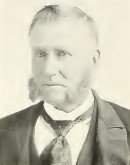 J. W. B. WELLCOME, SR. of Sleepy Eye,
Minnesota, has practiced the profession of medicine for
many years in this state. He was born in New Portland,
Maine, on June 4, 1825. His father, Timothy Wellcome,
was of German-English descent. He was liberally
educated, and was a schoolmate of Hannibal Hamlin. His
wife, who was Miss Mary E. Cummings, was educated at the
old Hebron Academy of Maine. To Mr. and Mrs. Timothy
Wellcome was born five sons and one daughter—the latter
and Dr. Wellcome being the only ones now living. Three
of the sons were clergymen—two of them for fifty
years—one was a farmer and fine a physician. J. W. B. WELLCOME, SR. of Sleepy Eye,
Minnesota, has practiced the profession of medicine for
many years in this state. He was born in New Portland,
Maine, on June 4, 1825. His father, Timothy Wellcome,
was of German-English descent. He was liberally
educated, and was a schoolmate of Hannibal Hamlin. His
wife, who was Miss Mary E. Cummings, was educated at the
old Hebron Academy of Maine. To Mr. and Mrs. Timothy
Wellcome was born five sons and one daughter—the latter
and Dr. Wellcome being the only ones now living. Three
of the sons were clergymen—two of them for fifty
years—one was a farmer and fine a physician.
While a boy Dr. Wellcome attended school at New
Portland.
When he was sixteen years old he left home and
began school again at the high school in Hallawell,
Maine from this school he gradated at the age of
twenty-one. At once his attention was turned to medicine
he worked hard to fit himself for the practice of that
profession.
He is a graduate of the College of Physicians and
Surgeons at St. Louis. He commenced practice at the age
of twenty-five. In 1858 Dr. Wellcome moved
from New England to Wisconsin and soon afterwards to
Garden City, Minnesota, where he resumed the practice of
medicine.
In the fall of 1862 he was appointed by Governor
Ramsey, of Minnesota, examining surgeon for the draft,
with headquarters at Mankato, Minnesota. In 1863 he was
contract surgeon in the Tenth Regiment Volunteer
Infantry, as first assistant surgeon in the place of W.
W. Clark, who was sick; this position he held for seven
months. He
also had medical charge of a regiment of Confederate
soldiers who were prisoners at the fort of Madelia,
Minnesota. Dr. Wellcome continued the practice of
medicine in Blue Earth County until 1870, when he moved
to New Ulm, where he lived and practiced for about four
years. He then moved to Sleepy Eye, where he has
continued in the profession ever since, with the
exception of two years, when sickness prevented active
work. For four years he held the position of surgeon for
the Winona & St. Peter Railway Company for its lines
west of Sleepy Eye; he also held the position of United
States pension surgeon for eight years. During his long
period of practice. Dr. Wellcome has been preceptor to
the following physicians, who have graduated from
regular schools of medicine: Dr. J. W. Andrews,
of Mankato; Dr. I. F. Burnside, of West Duluth; Dr. F.
H. Wellcome of Granite Falls: Dr. Wm. P. Lee, of
Fairfax, and Dr. J. W. B. Wellcome,
Jr., of Sleepy Eye.
Dr. Wellcome is a member of the St. Louis Academy
of Medicine, and is also a member of the State Medical
Society of Minnesota. He has been in the active practice
of medicine for forty-four years. His practice has been
extensive, and he has accumulated considerable property.
Is a stockholder in the Yellow Medicine County Bank. His
son, F. H.
Wellcome, is president of the bank.
At about the time he commenced practice he was
married to Miss Abby C. Starbird. Three sons and one
daughter were born to them. Only the daughter is now
living Mrs. Ella Case. Mrs. Wellcome died in 1857. In
1858 Dr. Wellcome was married to Sarah J. Hauser, of
Pennsylvania. They have had four sons; two of them have
adopted their father’s profession. Though over seventy
years of age. Dr. Wellcome is still actively engaged in
practice and in the study and verification of the
sciences to which he has devoted so much of his
life.
The
information on Trails to the Past © Copyright
may be used in personal family history research, with
source citation. The pages in entirety may not be
duplicated for publication in any fashion without the
permission of the owner. Commercial use of any material
on this site is not permitted. Please respect the
wishes of those who have contributed their time and
efforts to make this free site possible.~Thank
you!
|



